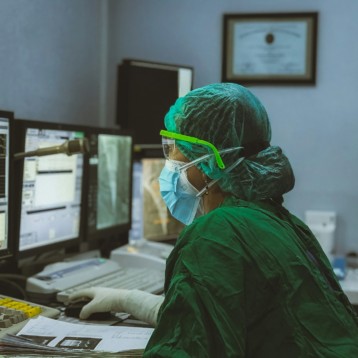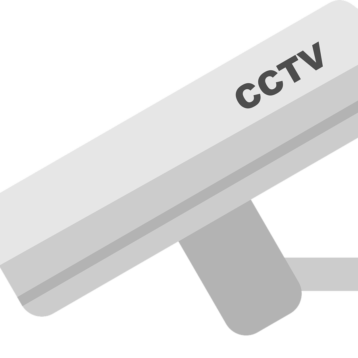The intertwined domains of robotics and artificial intelligence (AI) are catapulting us into a future that once seemed confined to the realms of science fiction. As these technologies rapidly advance, their collective impact extends far beyond the confines of research labs and tech companies. We are witnessing a profound transformation in the way we live, work, and relate to the world around us.
From the automation of routine tasks to the development of sophisticated autonomous systems, the fusion of robotics and AI is reshaping the very fabric of our existence, promising both unprecedented opportunities and unprecedented challenges. In this blog, we will navigate through this dynamic landscape, exploring the intricate ways in which robotics and AI are shaping the course of our future.

1. Revolutionizing the Workforce
The transformation of the workforce highlights the disruptive impact of robotics and AI. The job market is undergoing a substantial shift as these technologies automate routine tasks, allowing humans to focus on more complex and creative endeavors. This change isn’t confined to the introduction of robots in assembly lines but also involves the integration of AI in service sectors. This necessitates a shift from manual labor to roles that demand oversight, technical know-how, and strategic thinking. New job categories are emerging, emphasizing the growing need for re-skilling and signaling a future where adaptability is crucial. For deeper insights, explore the evolving capabilities of AI and generative AI at https://www.sap.com/products/artificial-intelligence/what-is-generative-ai.html .
In navigating this transformative landscape, staying informed about the evolving capabilities of AI becomes paramount, providing a strategic edge in adapting to the dynamic demands of the modern workforce.
2. Advancements in Healthcare
The future of AI in healthcare promises transformative changes to the way we approach medical care. AI applications, such as diagnostic algorithms and predictive analytics, analyze vast medical datasets rapidly, facilitating early disease detection and personalized treatment plans. Virtual health assistants powered by AI streamline patient interactions, ensuring timely information and improving communication between healthcare providers and patients. This patient-centric approach, coupled with AI-driven administrative efficiencies, not only lightens the workload for healthcare professionals but also enhances the overall healthcare experience.
Moreover, AI’s impact extends beyond patient care to medical research and drug discovery, offering potential breakthroughs in these fields. As technology continues to advance, the integration of AI in healthcare holds the key to more accessible, affordable, and efficient healthcare solutions, promising a future where medical interventions are more effective, patient-focused, and connected.
3. Impact on Education
The influence of AI is not limited to professional landscapes; it is making a significant impact on education. It provides a tool for personalized learning experiences, adapting to the pace and style of individual learners. Robotics serve as hands-on educational aids, fostering engagement and solidifying concepts in science, technology, engineering, and mathematics. Traditional educational systems, with their one-size-fits-all approach, are undergoing transformation, paving the way for a future where education is as unique as the learner.
4. Enhancements in Security
Security, a fundamental concern in any society, is being bolstered by AI and robotics. AI’s ability to analyze vast amounts of data enhances surveillance efforts, while robotics are deployed in defense and emergency response to keep humans out of harm’s way. However, these advancements bring ethical implications that must be carefully considered, from privacy concerns to the rules of engagement in law enforcement.
5. Automotive and Transport Evolution
The automotive industry stands on the brink of a revolution with the advent of autonomous vehicles. AI plays a critical role in traffic management and accident prevention, aiming to create safer travel conditions. Public transportation systems also stand to benefit from AI, with the potential for more efficient, environmentally friendly, and accessible services. As we delve into each sector, the far-reaching implications of these technologies become increasingly apparent, offering a glimpse into a world where innovation knows no bounds.
6. Changes in Manufacturing
The manufacturing industry is undergoing a transformative rebirth driven by the integration of robotics and artificial intelligence. Automated production lines, once the realm of science fiction, have become a reality in factories worldwide. Robots, with their tireless efficiency, handle tasks from assembly to packaging, while AI systems streamline operations by predicting maintenance needs and optimizing workflows. This synergy in logistics and supply chain management enhances speed, safety, and reliability. Furthermore, AI’s influence extends to product design and innovation, aiding in the creation of new products by analyzing trends, consumer behaviors, and material properties, fostering a new era of AI in manufacturing ingenuity.
7. Agricultural Advancements
In agriculture, robotics and AI are sowing the seeds for extraordinary productivity and sustainability. Robotic machinery takes on labor-intensive tasks such as planting and harvesting, providing accuracy and reducing strain on human laborers. AI steps into the role of the farmer with crop management systems that assess and predict factors like soil conditions, weather patterns, and crop health. This intelligent approach holds the promise of enhancing harvests, reducing waste, and meeting the world’s growing food demands without compromising the health of our planet.
8. Financial Services Transformation
The financial sector is not immune to the wave of AI and robotics. AI’s capabilities in algorithmic trading open new doors for market analysis and stock trading, allowing for faster and more data-driven transactions. Robotics also finds a place in customer service roles, where automated assistants handle routine inquiries, freeing human staff for more complex customer needs. Moreover, AI’s predictive capabilities pave the way for personalized financial advice, offering individual investors insights tailored to their unique financial situations and goals.
9. Household Robotics
Imagine a household where chores are a thing of the past, thanks to the ever-present assistance of robotics. This is not a distant possibility but an emerging reality. AI is becoming an integral part of smart home technology, with systems that learn and adapt to the homeowner’s preferences and routines.
Robotic appliances, from vacuums navigating living room floors to lawn mowers keeping the yard unspoiled, are changing the landscape of daily life. As these technologies become more dominant, they could shift household dynamics, redistributing how time and responsibilities are managed within the home.
Ethical and Social Considerations
Embracing the vast potential of robotics and AI requires navigating the ethical and social implications these technologies bring. The integration of AI into everyday life raises questions about privacy and the security of personal data. Robotics in the workplace prompts discussions about job displacement and the future of human labor. As AI systems become more independent, the social impact of their decisions on credit scoring, hiring practices, and even judicial matters demands careful consideration. Policymakers, technologists, and society at large must work together to ensure that the integration of AI and robotics into our world is done with foresight and responsibility.
Conclusion
The future shaped by robotics and AI is not a distant dream but an unfolding reality. Across sectors, from the precision of manufacturing lines to the personalized experiences of household gadgets, these technologies are redefining what is possible. As we stand at this crossroads, the challenge and opportunity lie in our ability to adapt and grow alongside these innovations.
By fostering a proactive approach and maintaining ethical vigilance, individuals and institutions can navigate this new era. Striking a balance between embracing innovation and preserving the human touch will be essential as we step into a future where AI and robotics stand as pillars of progress and prosperity.










